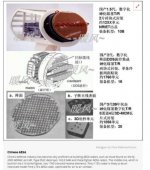@Gautam
What did you assume the operating frequency was? Also, unlike Pulse doppler radars, AESA radars tend to be able to operate on multiple frequencies. So, the value of operating wavelength will not be static. But they generally vary within the same wave band.
Uttam operate in X band ( 8.0 to 12 GHz )
& Wavelength at this frequency is from 3.75 to 2.5 cm.
Now antenna size need to be proportional to the wavelength ( lamda ) it's operating in...so between 3.75 & 2.5 cm in case of X band
If we know the area of Radar antenna & TR count we can easily calculate the lamda value.
Now if Uttam has 0.7 mt² area with such 912 TRM count than lamda value is around
5.54 cm which is is C band.
In terms of military usage C band radars are used for short range targeting. The Swathi WLR is a C-band radar for example.
Yes nothing wrong with it , only problem will be low TRM count , low resolution, low bandwidth, less gain , inferior LPI characteristics , higher susceptibility to jamming etc.
Advantages will be low power loads & greater range.
C-band is not ideal for the applications the LR-MFR is intended to perform.
True
I am pretty sure I was calculating area. My calculation may be wrong, but its not diameter. The radiating element of the UTTAM radar is not round so how would I calculate a diameter?
With area of 0.7 mt²....... antenna diameter will turn out be above 0.9 mt which is same as that of Su 30, doesn't matter if it's round or not.
I think people are confusing radome area with that of antenna.
Fine, I'll calculate it on NX. Hold on.......
There.....
Surface Area of UTTAM= 0.3839 sq meter.
true diameter of uttam antenna is mentioned here

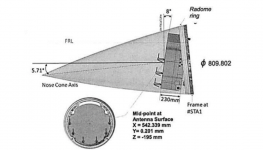
It's 0.54 mt so surface area wont be the same + TRM fill factor is never 100 %...it's around 60 % by my estimation for Uttam
Now the above diagram

mentions mid point at antenna surface
X = 542.339 mm
now this is the true diameter of uttam antenna... since uttam is not a perfect Circle so to be safe i took 0.55 mt as a diameter and than calculated the lamda value which turn out to be around 3.22 cm... actual value would probably between 3.2 & 3.3 cm which is quite good actually ( i was surprised when i calculated it

).
But if area is 0.3839 sq mt as u calculated than lamda value would be around 4.1 cm which is in C band
There are 30 plank units comprising of
24 Numbers of 8 QTRM Plank unit & 6 Numbers of 6 QTRM plank unit with total of 228 QTRM units.
228 x 4 = 912 TRM modules
Surface area of each LR-MFR panel= 64 sq meter.
if antenna area of LR - MFR is 64 sq mt.
and it's working in same band as Uttam with same packaging density with lamda value of 3.2 cm.... actual TRM count would be around 250,000 in one panel with two... Total would be around 500,000 TRM

Now if this radar is operating in lower band like S band.....TRM count will be less but won't affect the performance



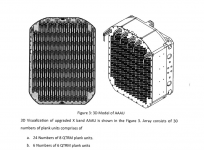




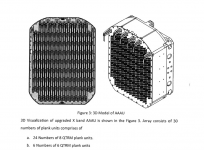



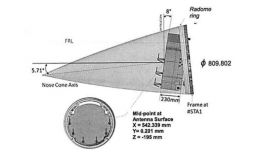
 ? ( Correct me if i am wrong )
? ( Correct me if i am wrong ) 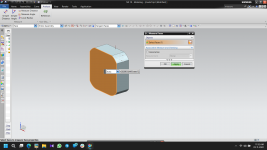
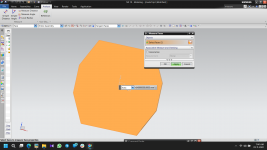

 mentions mid point at antenna surface
mentions mid point at antenna surface

